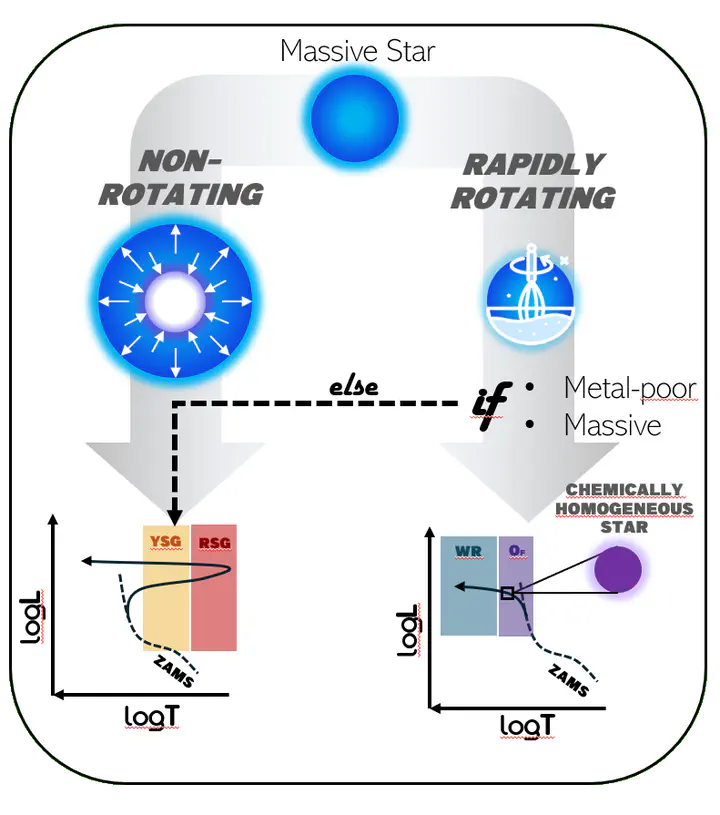Cosmic beyblades
 Massive rotator evolution scheme
Massive rotator evolution schemeMassive stars are often found in binary systems. Binary life can be tough: mass transfer episodes, tidal interactions, and common envelope events strongly affect the evolution of a massive star. From time to time, some of these processes can spin up massive stars to rotational velocities that exceed hundreds of kilometers per second. Under these conditions, a star can become a massive rotator, and its stellar interior can become fully mixed. Ashes of nuclear fusion are brought toward the stellar surface while fresh hydrogen fuel is mixed from the outer envelope into the stellar interior, preventing the formation of a strong chemical gradient. These stars are called chemically homogeneous, and their evolutionary pathway strongly differs from that of normal stars, with significant implications for black hole formation. In my work, I study the effects of binarity both from the stellar population and the compact binary merger perspectives, and I investigate the impact of chemically homogeneous evolution on massive stars.